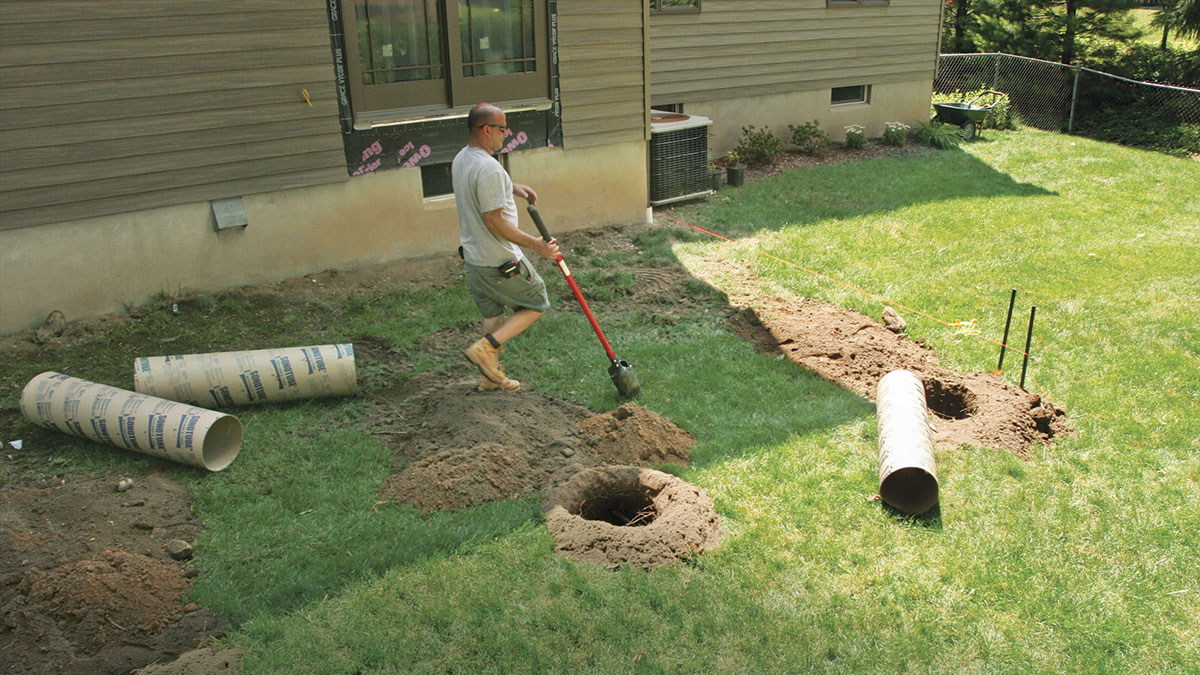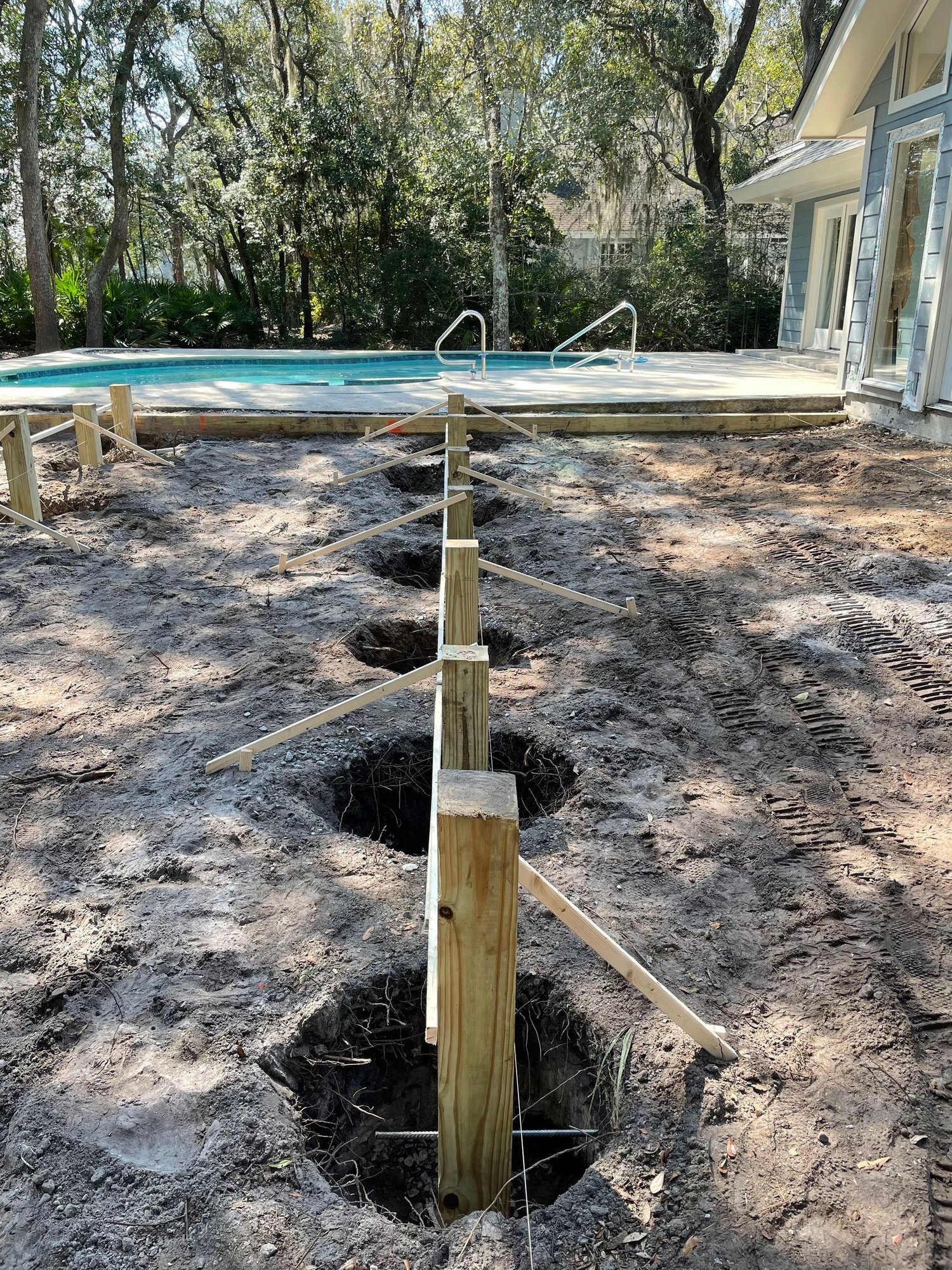Structure from the Ground Up: The Ultimate Guide to Designing and Setting Up Deck Footings
Structure from the Ground Up: The Ultimate Guide to Designing and Setting Up Deck Footings
Blog Article
Specialist Tips for Setting Up Deck Footings to Support Your Outdoor Room
When it comes to developing a deck, one of the most vital components to take into consideration is the installation of appropriate footings. These footings are the structure upon which your exterior space will rest, providing security and support for years to come. What precisely does it take to set up deck footings correctly?
Relevance of Appropriate Deck Footings
Proper deck grounds are vital for guaranteeing the security and durability of your exterior area. Without solid and appropriately installed footings, your deck might end up being unpredictable, leading to safety and security risks and pricey repair services.

In addition to stability, correct deck footings also add to the durability of your outside space (Deck Footings). Grounds that are created and built to withstand the components and dirt problems in your area will certainly assist avoid the deck from working out or shifting gradually. By making sure the footings are appropriately sized and installed, you can decrease the danger of damage to the deck framework, prolonging its life-span and decreasing the need for expensive repairs or substitutes

Choosing the Right Kind Of Footings
When selecting the appropriate sort of footings for your deck, it is essential to consider factors such as soil problems, neighborhood building ordinance, and the total layout of your exterior area. The type of footing you choose will play an important function in guaranteeing the stability and longevity of your deck.
One usual kind of footing is the concrete footing. Concrete footings appropriate for the majority of soil conditions and offer exceptional assistance for decks. They are typically installed below the frost line to stop moving and resolving as a result of cold and thawing cycles. Another option is helical piers, which are perfect for areas with unsteady soil or high water tables. These piers are screwed right into the ground and supply solid assistance for the deck.
Sometimes, you may require to utilize customized grounds, such as stack footings or deep foundations, if you are building a multi-level or large deck. These grounds are made to disperse the weight of the deck over a bigger area, guaranteeing stability and preventing sinking or working out.
Before picking a kind of ground, it is important to seek advice from neighborhood building ordinance and guidelines to make sure compliance. Additionally, take into consideration the layout and meant use your exterior area. Elements such as the dimension, shape, and load-bearing requirements of your deck will certainly affect the type of footing that is most ideal.
Preparing the Ground for Footing Installment
To appropriately prepare the ground for footing installation, it is necessary to examine the soil problems and take needed steps to make certain stability and resilience of the deck. The initial step is to excavate the area where the grounds will certainly be installed. The deepness of the excavation will depend upon the frost line in your region and the certain requirements of the deck layout. It is necessary to remove any type of vegetation, rocks, or particles from the excavation to guarantee a strong foundation.
When the location has been excavated, the following action is to compact the soil. This can be done utilizing a plate compactor or by making use of a hand tamper. Condensing the dirt aids to get rid of any kind of voids or air pockets, which can cause resolving and instability in time.
After condensing the dirt, it is very important to lay a layer of gravel or crushed rock at the end of the excavation. This will certainly offer drain and aid to stop water from pooling around the footings, which can cause disintegration and instability.
Step-by-Step Overview to Installing Deck Footings
After correctly preparing the ground for footing setup, the following action is to start the process of installing deck footings. This step-by-step overview will certainly give you with a clear understanding of just how to install deck footings for your outdoor area.
Figure out the area: Beginning by marking the positions of the deck footings utilizing risks and string. Make certain that the areas align with the design and layout of your deck.
Dig the holes: Utilize an article opening miner or an auger to dig the openings for the grounds. The depth and size of the openings must remain in conformity with neighborhood building ordinance and the certain needs of your deck layout.
Degree the holes: Make use of a degree to make sure that the openings are dug to the correct deepness and are level with each other. (Deck Footings)
Add crushed rock: Location a layer of gravel at the end of each hole to boost water drainage and stop the wood from decaying.
Insert the grounds: Position the footings into the holes, seeing to it they are degree and plumb. Utilize a degree and a measuring tape to ensure precision.
Protect the footings: Put concrete right into the holes around the grounds, loading them to the top. Use a post degree to guarantee the grounds stay level as the concrete collections.
Enable time for curing: Allow the concrete remedy according to the manufacturer's guidelines before waging the deck building and construction.
Typical Mistakes to Stay Clear Of During Footing Installment
One crucial aspect to take into consideration during the installation of deck grounds is avoiding usual errors that can endanger the stability and longevity of your outside space. While deck grounds may feel like a simple and simple part of the construction process, overlooking particular elements can lead to costly fixings and prospective safety dangers down the line.
Additionally, disregarding to set up proper water drainage actions can trigger water to collect around the footings, causing rot, decay, and the ultimate weakening of the deck's structure. Using the incorrect kind of footing material or stopping working to appropriately protect the grounds can endanger their structural stability.
To stay clear of these mistakes, it is necessary to seek advice from a professional or comply with sector standards to guarantee correct ground installment. By doing so, you can ensure the security and durability of your outside area, giving a satisfying and safe setting for many years to find.
Verdict
To conclude, installing proper deck footings is vital for the security and long life of your exterior space. By choosing the right type of footings and effectively preparing the ground, you can make certain a strong foundation for your deck. Following a step-by-step guide and avoiding common mistakes during their website footing installation will further enhance the resilience and safety of your deck.
Proper deck footings are essential for guaranteeing the stability and longevity of your outdoor room. The grounds offer as a link between the deck and the ground, allowing the weight of the deck and its occupants to be dispersed equally right into the dirt.One typical type of footing is the concrete ground. Insert the grounds: Position the footings into the view it now openings, making certain they are level and plumb. Secure the grounds: Put concrete into the openings around the grounds, filling them to the top.
Report this page